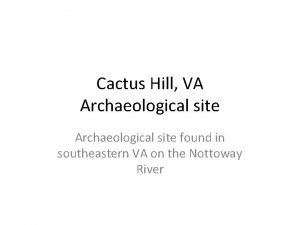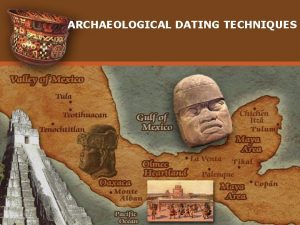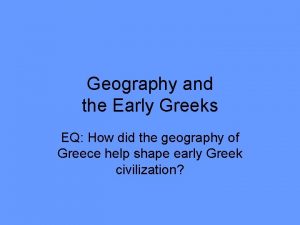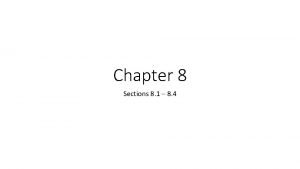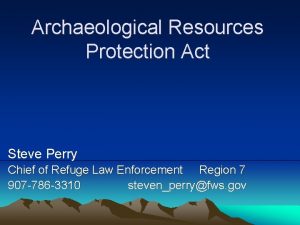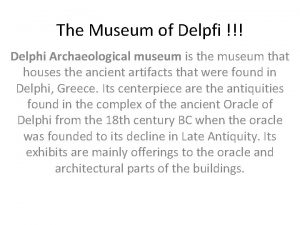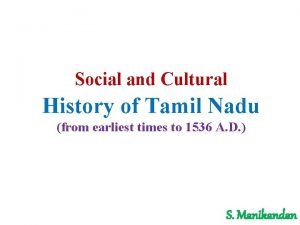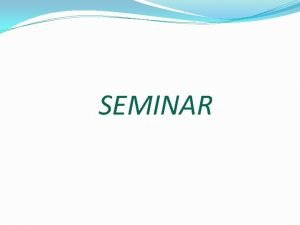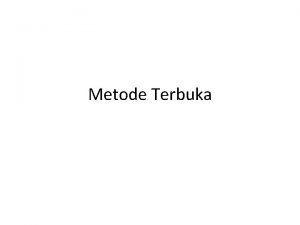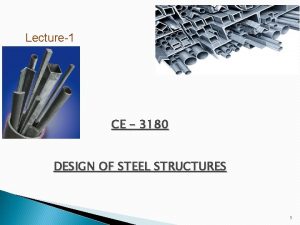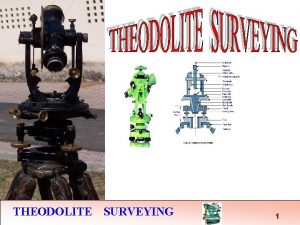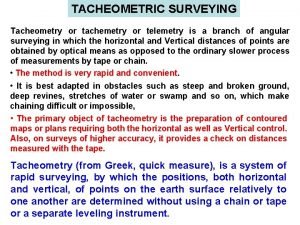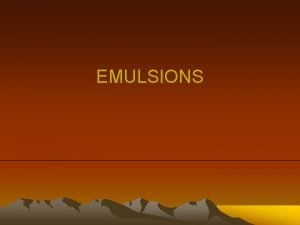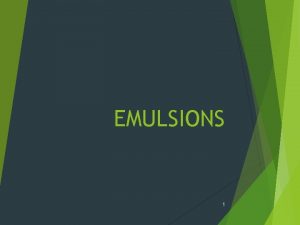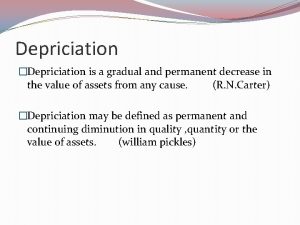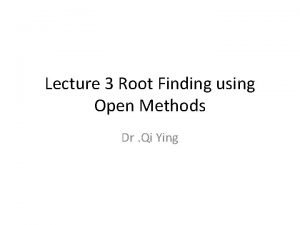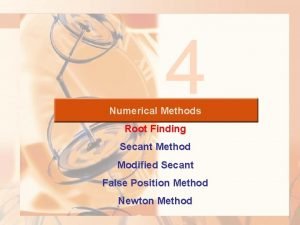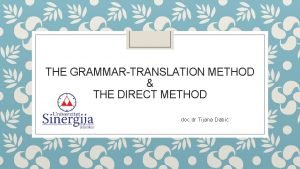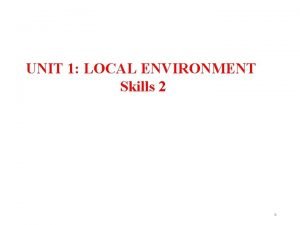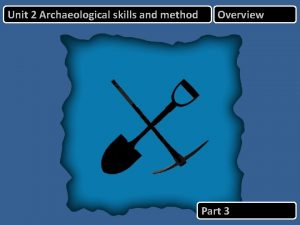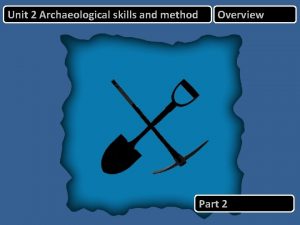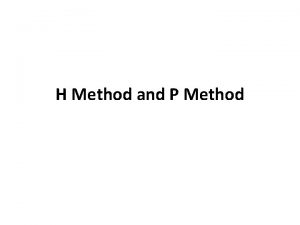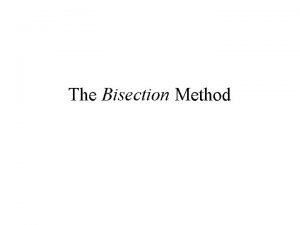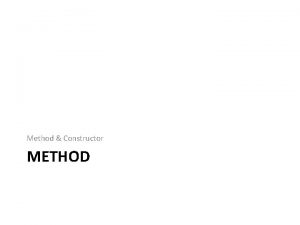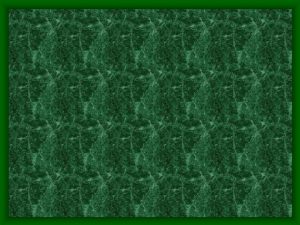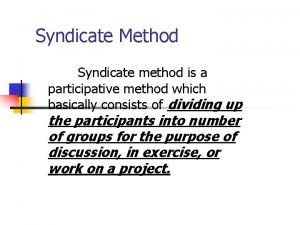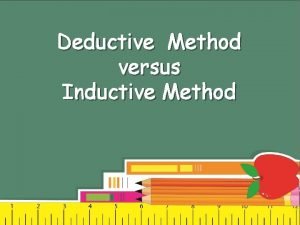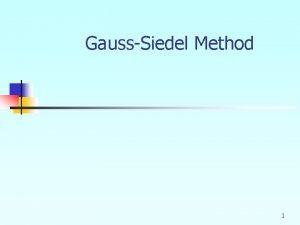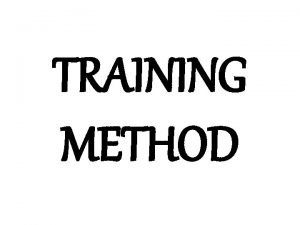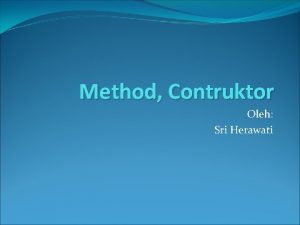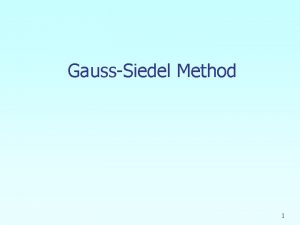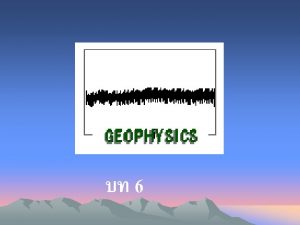Unit 2 Archaeological skills and method Overview Unit


![Unit 2 Archaeological skills and methods Process [1] Reconnaissance [2] Excavation [3] Recording Formation Unit 2 Archaeological skills and methods Process [1] Reconnaissance [2] Excavation [3] Recording Formation](https://slidetodoc.com/presentation_image/59bfe962f1106dc3106d1350ade48f48/image-3.jpg)





![[1] Reconnaissance (A) Desktop survey Sites and Monuments Record (SMRs) or the National Monuments [1] Reconnaissance (A) Desktop survey Sites and Monuments Record (SMRs) or the National Monuments](https://slidetodoc.com/presentation_image/59bfe962f1106dc3106d1350ade48f48/image-9.jpg)
![[1] Reconnaissance (A) Desktop survey Archaeological records: • Early excavation or survey results • [1] Reconnaissance (A) Desktop survey Archaeological records: • Early excavation or survey results •](https://slidetodoc.com/presentation_image/59bfe962f1106dc3106d1350ade48f48/image-10.jpg)
![[1] Reconnaissance (B) Surface survey Non-destructive visual surveys at ground level Recording standing buildings [1] Reconnaissance (B) Surface survey Non-destructive visual surveys at ground level Recording standing buildings](https://slidetodoc.com/presentation_image/59bfe962f1106dc3106d1350ade48f48/image-11.jpg)
![[1] Reconnaissance (B) Surface survey – fieldwalking Fieldwalking, or surface collection, involves systematic collection [1] Reconnaissance (B) Surface survey – fieldwalking Fieldwalking, or surface collection, involves systematic collection](https://slidetodoc.com/presentation_image/59bfe962f1106dc3106d1350ade48f48/image-12.jpg)
![[1] Reconnaissance (B) Surface survey – fieldwalking Processing Once washed and identified, finds are [1] Reconnaissance (B) Surface survey – fieldwalking Processing Once washed and identified, finds are](https://slidetodoc.com/presentation_image/59bfe962f1106dc3106d1350ade48f48/image-13.jpg)
![[1] Reconnaissance (B) Surface survey – other methods Shovel pit testing can take place [1] Reconnaissance (B) Surface survey – other methods Shovel pit testing can take place](https://slidetodoc.com/presentation_image/59bfe962f1106dc3106d1350ade48f48/image-14.jpg)
![[1] Reconnaissance (C) Geophysical and geochemical Geochemical surveys: detect human activity by chemical changes [1] Reconnaissance (C) Geophysical and geochemical Geochemical surveys: detect human activity by chemical changes](https://slidetodoc.com/presentation_image/59bfe962f1106dc3106d1350ade48f48/image-15.jpg)
![[1] Reconnaissance Geochemical survey Used to locate areas of past human activity by detecting [1] Reconnaissance Geochemical survey Used to locate areas of past human activity by detecting](https://slidetodoc.com/presentation_image/59bfe962f1106dc3106d1350ade48f48/image-16.jpg)
![[1] Reconnaissance Geophysical surveys Detect features through their physical differences with the surrounding soil. [1] Reconnaissance Geophysical surveys Detect features through their physical differences with the surrounding soil.](https://slidetodoc.com/presentation_image/59bfe962f1106dc3106d1350ade48f48/image-17.jpg)
![[1] Reconnaissance Resistivity surveying • Detected by passing an electric current through the ground [1] Reconnaissance Resistivity surveying • Detected by passing an electric current through the ground](https://slidetodoc.com/presentation_image/59bfe962f1106dc3106d1350ade48f48/image-18.jpg)
![[1] Reconnaissance Magnetometer surveying A second type of distortion is caused where topsoil has [1] Reconnaissance Magnetometer surveying A second type of distortion is caused where topsoil has](https://slidetodoc.com/presentation_image/59bfe962f1106dc3106d1350ade48f48/image-19.jpg)
![[1] Reconnaissance Magnetometer surveying Sensitive magnetic instruments are easily disturbed by iron, including nails, [1] Reconnaissance Magnetometer surveying Sensitive magnetic instruments are easily disturbed by iron, including nails,](https://slidetodoc.com/presentation_image/59bfe962f1106dc3106d1350ade48f48/image-20.jpg)
![[1] Reconnaissance Magnetometer surveying Many times more sensitive than conventional magnetometers and more commonly [1] Reconnaissance Magnetometer surveying Many times more sensitive than conventional magnetometers and more commonly](https://slidetodoc.com/presentation_image/59bfe962f1106dc3106d1350ade48f48/image-21.jpg)
![[1] Reconnaissance Metal detectors Provide information in advance of digging such as the position [1] Reconnaissance Metal detectors Provide information in advance of digging such as the position](https://slidetodoc.com/presentation_image/59bfe962f1106dc3106d1350ade48f48/image-22.jpg)
![[1] Reconnaissance Ground penetrating radar (GPR) GPR works by transmitting pulses of energy into [1] Reconnaissance Ground penetrating radar (GPR) GPR works by transmitting pulses of energy into](https://slidetodoc.com/presentation_image/59bfe962f1106dc3106d1350ade48f48/image-23.jpg)
![[1] Reconnaissance Dowsing None of these methods are particularly useful on waterlogged sites. Their [1] Reconnaissance Dowsing None of these methods are particularly useful on waterlogged sites. Their](https://slidetodoc.com/presentation_image/59bfe962f1106dc3106d1350ade48f48/image-24.jpg)
![[1] Reconnaissance Sonar Side-scan sonar measures sound waves as they ‘bounce back’ and can [1] Reconnaissance Sonar Side-scan sonar measures sound waves as they ‘bounce back’ and can](https://slidetodoc.com/presentation_image/59bfe962f1106dc3106d1350ade48f48/image-25.jpg)
![[1] Reconnaissance EDM • Pointed at objects to measure distances • Ensures accurate scaling [1] Reconnaissance EDM • Pointed at objects to measure distances • Ensures accurate scaling](https://slidetodoc.com/presentation_image/59bfe962f1106dc3106d1350ade48f48/image-26.jpg)
![[1] Reconnaissance Site survey Tape measure • Fine measurement • Distance between certain objects [1] Reconnaissance Site survey Tape measure • Fine measurement • Distance between certain objects](https://slidetodoc.com/presentation_image/59bfe962f1106dc3106d1350ade48f48/image-27.jpg)
![[1] Reconnaissance • • (D)Aerial survey Vertical aerial photography Oblique aerial photography Satellite imaging [1] Reconnaissance • • (D)Aerial survey Vertical aerial photography Oblique aerial photography Satellite imaging](https://slidetodoc.com/presentation_image/59bfe962f1106dc3106d1350ade48f48/image-28.jpg)
![[1] Reconnaissance Verticals What are aerial photographs used for? Show traces from features such [1] Reconnaissance Verticals What are aerial photographs used for? Show traces from features such](https://slidetodoc.com/presentation_image/59bfe962f1106dc3106d1350ade48f48/image-29.jpg)
![[1] Reconnaissance Verticals What is the main value of vertical aerial photographs? • Main [1] Reconnaissance Verticals What is the main value of vertical aerial photographs? • Main](https://slidetodoc.com/presentation_image/59bfe962f1106dc3106d1350ade48f48/image-30.jpg)
![[1] Reconnaissance Obliques What are oblique photographs? • Taken of points of interest from [1] Reconnaissance Obliques What are oblique photographs? • Taken of points of interest from](https://slidetodoc.com/presentation_image/59bfe962f1106dc3106d1350ade48f48/image-31.jpg)
![[1] Reconnaissance Oblique air photograph of the deserted medieval village at Goxhill, Humberside. Note [1] Reconnaissance Oblique air photograph of the deserted medieval village at Goxhill, Humberside. Note](https://slidetodoc.com/presentation_image/59bfe962f1106dc3106d1350ade48f48/image-32.jpg)

![[1] Reconnaissance Shadow sites When is the best time to photograph shadow sites? • [1] Reconnaissance Shadow sites When is the best time to photograph shadow sites? •](https://slidetodoc.com/presentation_image/59bfe962f1106dc3106d1350ade48f48/image-34.jpg)
![[1] Reconnaissance Identifiable features – cropmarks • Cropmark sites some of the best indicators [1] Reconnaissance Identifiable features – cropmarks • Cropmark sites some of the best indicators](https://slidetodoc.com/presentation_image/59bfe962f1106dc3106d1350ade48f48/image-35.jpg)
![[1] Reconnaissance Identifiable features – cropmarks What factors may limit the usefulness of cropmarks? [1] Reconnaissance Identifiable features – cropmarks What factors may limit the usefulness of cropmarks?](https://slidetodoc.com/presentation_image/59bfe962f1106dc3106d1350ade48f48/image-36.jpg)
![[1] Reconnaissance Identifiable features – cropmarks These drawings show an Iron Age ditch, forgotten [1] Reconnaissance Identifiable features – cropmarks These drawings show an Iron Age ditch, forgotten](https://slidetodoc.com/presentation_image/59bfe962f1106dc3106d1350ade48f48/image-37.jpg)
![[1] Reconnaissance Identifiable features – soil marks What are soil marks? Evidence of ploughed-out [1] Reconnaissance Identifiable features – soil marks What are soil marks? Evidence of ploughed-out](https://slidetodoc.com/presentation_image/59bfe962f1106dc3106d1350ade48f48/image-38.jpg)
![[1] Reconnaissance Satellites currently active which operate at a resolution that may be suitable [1] Reconnaissance Satellites currently active which operate at a resolution that may be suitable](https://slidetodoc.com/presentation_image/59bfe962f1106dc3106d1350ade48f48/image-39.jpg)
![[1] Reconnaissance Airborne Lidar Use of Lidar (light detection and ranging) • Uses an [1] Reconnaissance Airborne Lidar Use of Lidar (light detection and ranging) • Uses an](https://slidetodoc.com/presentation_image/59bfe962f1106dc3106d1350ade48f48/image-40.jpg)



- Slides: 43

Unit 2 Archaeological skills and method Overview

Unit 2 Archaeological skills and method The exam 1 hour 45 minutes 90 marks Section A (60 minutes) Source response (6– 8 questions) (60 marks) Read introduction and source booklet answer all questions 1 minute per mark Section B (45 minutes) Chose one question from 3. Use lots of examples (including the sources and Unit 1 material)
![Unit 2 Archaeological skills and methods Process 1 Reconnaissance 2 Excavation 3 Recording Formation Unit 2 Archaeological skills and methods Process [1] Reconnaissance [2] Excavation [3] Recording Formation](https://slidetodoc.com/presentation_image/59bfe962f1106dc3106d1350ade48f48/image-3.jpg)
Unit 2 Archaeological skills and methods Process [1] Reconnaissance [2] Excavation [3] Recording Formation Process [4] Analysis [5] Dating

Site formation processes Artefacts Humanly made or modified portable objects, such as stone tools, pottery and metal weapons. Features Humanly modified components of a site or landscape, such as hearths, postholes, and storage pits - non-portable artefacts. Ecofacts are non-artefactual organic and environmental remains. These include human skeletons, animal bones and plant remains, and also soils and sediments. Archaeological sites Places where artefacts, features, structures, and organic and environmental remains are found together. Places where significant traces of human activity are identified.

The importance of context Immediate matrix Material surrounding it, usually some sort of sediment such as gravel, sand, or clay Provenience Horizontal and vertical position within the matrix Association Occurrence together with other archaeological remains, usually in the same matrix Primary context The original position of an artefact or feature before any human or natural disturbance Secondary context When an artefact or feature is taken out of its original position

Formation processes Cultural processes The formation process is the way in which finds came to be buried and what happened to them after they were buried. Q: Make a list of the different ways an artefact may come to be in the archaeological record and then what might happen to it after burial. Use these images to explain the importance of the formation process.

Formation processes Cultural processes 1 3 Bifacial point in haft Hammerstone Waste Acquisition Use 4 2 Broken bifacial point Finished bifacial point Waste Manufacture Disposal

Formation processes Natural formation processes such as river action can disturb or destroy the primary context of archaeological material. Here we will focus on that material itself, and the natural processes that cause decay. Inorganic materials The most common inorganic materials to survive archaeologically are stone, clay and metals. Organic materials Survival of organic materials is determined largely by the matrix (the surrounding material) and by climate (local and regional). Occasional influence of natural disasters such as volcanic eruptions. The matrix and climate can determine the survival of organic materials. Extreme conditions • Waterlogged environments • Dry environments • Cold environments
![1 Reconnaissance A Desktop survey Sites and Monuments Record SMRs or the National Monuments [1] Reconnaissance (A) Desktop survey Sites and Monuments Record (SMRs) or the National Monuments](https://slidetodoc.com/presentation_image/59bfe962f1106dc3106d1350ade48f48/image-9.jpg)
[1] Reconnaissance (A) Desktop survey Sites and Monuments Record (SMRs) or the National Monuments Record (NMR) offices. Historic Environment Records (HERs), including information on historic buildings and designed landscapes. Historical documents: Known documents are archived or recorded in the County Records Office. Sources have also been catalogued in a volume of the Victoria County History (VCR). Legal documents: Records of ownership such as Anglo-Saxon charters or court records, wills and inventories which can be linked to particular buildings may provide lists of contents. Tax records: These are particularly valuable in helping to identify landowning units and their economic uses. Economic records: Order and sales books, estate agents’ bills. Pictorial records: Paintings, engravings and photographs Written accounts: Descriptions of places in books, diaries and travelogues.
![1 Reconnaissance A Desktop survey Archaeological records Early excavation or survey results [1] Reconnaissance (A) Desktop survey Archaeological records: • Early excavation or survey results •](https://slidetodoc.com/presentation_image/59bfe962f1106dc3106d1350ade48f48/image-10.jpg)
[1] Reconnaissance (A) Desktop survey Archaeological records: • Early excavation or survey results • Local collections of finds and reports • Details of previous archaeological work and stray finds for much of Britain are held in local SMRs. Oral accounts: Farmers may be able to identify areas where building rubble has been ploughed up or where dressed stones have been removed. Maps: Particular value in tracking changes through time (settlement shape and location, boundaries, land units, fields and hedges. Early maps Ordnance Survey (OS) maps From the 1880 s – by examining a succession of maps for any area, changes in land use and the built environment can be easily seen. Maps used in archaeological A 1: 2500 map allows you to identify individual metre squares with a grid reference. These maps are held in county or district planning offices.
![1 Reconnaissance B Surface survey Nondestructive visual surveys at ground level Recording standing buildings [1] Reconnaissance (B) Surface survey Non-destructive visual surveys at ground level Recording standing buildings](https://slidetodoc.com/presentation_image/59bfe962f1106dc3106d1350ade48f48/image-11.jpg)
[1] Reconnaissance (B) Surface survey Non-destructive visual surveys at ground level Recording standing buildings • Detailed studies of the material and construction techniques of • Laser scanning is used in some buildings which are covered with lichen to see how they are constructed. • Written description, CAD (computer-aided design) based recording of every brick or stone. • Example: Defence of Britain project, which collected records on surviving defensive monuments of the Second World War.
![1 Reconnaissance B Surface survey fieldwalking Fieldwalking or surface collection involves systematic collection [1] Reconnaissance (B) Surface survey – fieldwalking Fieldwalking, or surface collection, involves systematic collection](https://slidetodoc.com/presentation_image/59bfe962f1106dc3106d1350ade48f48/image-12.jpg)
[1] Reconnaissance (B) Surface survey – fieldwalking Fieldwalking, or surface collection, involves systematic collection of artefacts from the ploughed soil. Density scatters of particular materials such as building rubble or broken pottery enable specific sites to be identified. Ceramics and worked stone are the most commonly gathered but metal, bone and burnt stone are often also collected. Sampling Not everything will be collected, particularly when building rubble is involved. For instance, will all ceramics be collected or just diagnostic pieces? Decisions also have to be taken about the width of transects or size of grids. Timing Ideally ploughed soil should have been broken down by weathering and recent rain will have cleared dust from the surface. Walkers either proceed along a transect in a series of stints or search a grid. Grids tend to be used when total coverage of a field is required. The material collected is bagged and tagged with the number of the grid or stint for processing and analysis.
![1 Reconnaissance B Surface survey fieldwalking Processing Once washed and identified finds are [1] Reconnaissance (B) Surface survey – fieldwalking Processing Once washed and identified, finds are](https://slidetodoc.com/presentation_image/59bfe962f1106dc3106d1350ade48f48/image-13.jpg)
[1] Reconnaissance (B) Surface survey – fieldwalking Processing Once washed and identified, finds are counted for each grid or stint. Plotted on a distribution map to show patterns and concentrations. Computer displays using GIS geographic information system. Key strengths • Relatively cheap way of surveying large areas. • Helps establish the function and period and provide insights into location and exchange. • Can indicate the spread and foci (centre point) of evidence. Limitations Only really useful on arable land at certain times in the agricultural cycle. Medieval manuring practices transferred much domestic refuse to the plough-soil. Different materials behave differently in the same soil. Some material migrates further than others. Not always a good indication of settlement. Differential collection by different fieldwalkers.
![1 Reconnaissance B Surface survey other methods Shovel pit testing can take place [1] Reconnaissance (B) Surface survey – other methods Shovel pit testing can take place](https://slidetodoc.com/presentation_image/59bfe962f1106dc3106d1350ade48f48/image-14.jpg)
[1] Reconnaissance (B) Surface survey – other methods Shovel pit testing can take place in woods, pasture and gardens where fieldwalking is impossible. Coring and augering are also used to sample the subsoil. This can provide a snapshot of stratigraphy and the sample can be examined for artefactual or environmental evidence. Probing, which involves driving a rod into the ground, is more useful for tracing shallow buried features such as walls on known sites.
![1 Reconnaissance C Geophysical and geochemical Geochemical surveys detect human activity by chemical changes [1] Reconnaissance (C) Geophysical and geochemical Geochemical surveys: detect human activity by chemical changes](https://slidetodoc.com/presentation_image/59bfe962f1106dc3106d1350ade48f48/image-15.jpg)
[1] Reconnaissance (C) Geophysical and geochemical Geochemical surveys: detect human activity by chemical changes in the soil (organic phosphate) Geophysical surveys: detect features through physical differences in the soil Resistivity surveys: electric current passed through the ground to detect features Magnetometer surveys: detect changes to the magnetic field – indicating human activity Caesium vapour magnetometer surveys: pumps caesium vapour (sensitive to magnetic variations) Metal detector – useful for detecting metal objects to about 15 cm Ground penetrating radar (GPR): sends a pulse of energy and records the length of time taken and strength of return signal Sonar: acoustic sensing – useful for detecting underwater features
![1 Reconnaissance Geochemical survey Used to locate areas of past human activity by detecting [1] Reconnaissance Geochemical survey Used to locate areas of past human activity by detecting](https://slidetodoc.com/presentation_image/59bfe962f1106dc3106d1350ade48f48/image-16.jpg)
[1] Reconnaissance Geochemical survey Used to locate areas of past human activity by detecting differences in the chemical properties of the soil. All living things produce organic phosphate as waste or through decay. Samples of soil are tested for levels of phosphate measured. Concentrations of organic phosphate may indicate settlements or animal enclosures.
![1 Reconnaissance Geophysical surveys Detect features through their physical differences with the surrounding soil [1] Reconnaissance Geophysical surveys Detect features through their physical differences with the surrounding soil.](https://slidetodoc.com/presentation_image/59bfe962f1106dc3106d1350ade48f48/image-17.jpg)
[1] Reconnaissance Geophysical surveys Detect features through their physical differences with the surrounding soil. Most common techniques detect magnetic and electrical anomalies. Shift in emphasis among archaeologists in favour of preservation rather than excavation, these techniques are now commonplace. The manufacture of increasingly reliable instruments for archaeology has seen magnetometry become a standard technique.
![1 Reconnaissance Resistivity surveying Detected by passing an electric current through the ground [1] Reconnaissance Resistivity surveying • Detected by passing an electric current through the ground](https://slidetodoc.com/presentation_image/59bfe962f1106dc3106d1350ade48f48/image-18.jpg)
[1] Reconnaissance Resistivity surveying • Detected by passing an electric current through the ground and comparing readings. • More moisture = better conductivity. A buried ditch or grave will generally retain water better than the surrounding soil. • A buried wall or road will conduct poorly and therefore resist the current more than the surrounding soil. • Clay retains moisture well, so differences in resistance between the soil and buried ditches or pits may be impossible to detect. • Applies to many soils if they become waterlogged in wintertime. • Plants, rocks and variations in the depths of soils can also create misleading readings. Geophysical surveys • Differences in the ability of different soils to conduct electricity.
![1 Reconnaissance Magnetometer surveying A second type of distortion is caused where topsoil has [1] Reconnaissance Magnetometer surveying A second type of distortion is caused where topsoil has](https://slidetodoc.com/presentation_image/59bfe962f1106dc3106d1350ade48f48/image-19.jpg)
[1] Reconnaissance Magnetometer surveying A second type of distortion is caused where topsoil has been subject to considerable heat. This erases the magnetic properties of the iron oxides. When the soil cools the iron oxides become permanently magnetised. Since this field changes over time the sites of kilns and hearths appear as magnetic anomalies. Geophysical surveys The earth’s magnetic field is generally uniform in any one place. However, local magnetic distortions can be caused by past human activity. Topsoil contains iron oxide. In some forms its crystals are magnetic. A ditch which has filled up with topsoil will contain more iron oxide than the surrounding area. Its fill will therefore be slightly different magnetically and may be detected by sensitive, modern magnetometers.
![1 Reconnaissance Magnetometer surveying Sensitive magnetic instruments are easily disturbed by iron including nails [1] Reconnaissance Magnetometer surveying Sensitive magnetic instruments are easily disturbed by iron, including nails,](https://slidetodoc.com/presentation_image/59bfe962f1106dc3106d1350ade48f48/image-20.jpg)
[1] Reconnaissance Magnetometer surveying Sensitive magnetic instruments are easily disturbed by iron, including nails, pipes and wire fences as well as the zips and piercings of the archaeologist. A further limitation can be background interference from magnetic bedrock or where a long period of occupation has left a magnetic layer over a wide area. Sandy and clay soils often do not provide sufficient contrast. Fluctuations in the earth’s magnetic field also have to be taken into account. It requires considerable skill and experience to interpret the results. Geophysical surveys To be able to detect anomalies, the magnetic background of the soil has to be measured and magnetometers calibrated against it. The measuring of this magnetic susceptibility of the topsoil can also be used as a crude but rapid survey technique in its own right. Magnetic hotspots suggest areas of past settlement or industrial activity, which could be surveyed using other methods.
![1 Reconnaissance Magnetometer surveying Many times more sensitive than conventional magnetometers and more commonly [1] Reconnaissance Magnetometer surveying Many times more sensitive than conventional magnetometers and more commonly](https://slidetodoc.com/presentation_image/59bfe962f1106dc3106d1350ade48f48/image-21.jpg)
[1] Reconnaissance Magnetometer surveying Many times more sensitive than conventional magnetometers and more commonly used in Germany and Austria. Typically several machines are used close together on a large wooden handcart. They work by pumping caesium vapour and taking rapid measurements at around 25 cm intervals. This alkali is so sensitive to minute variations in magnetism that it can detect and define the edges of buried features formed by traces of magnetite. This iron oxide (Fe 3 O 4) is concentrated in the remains of the bacteria which consumed the wooden structures such as posts which once stood there. At £ 40, 000 per machine and perhaps four machines on a cart, this technique is expensive. Geophysical surveys Caesium vapour (CV) magnetometers
![1 Reconnaissance Metal detectors Provide information in advance of digging such as the position [1] Reconnaissance Metal detectors Provide information in advance of digging such as the position](https://slidetodoc.com/presentation_image/59bfe962f1106dc3106d1350ade48f48/image-22.jpg)
[1] Reconnaissance Metal detectors Provide information in advance of digging such as the position of burial deposits. Skill is required to avoid time being wasted exploring buried slag or modern metal debris. Similarly they can sweep areas in advance of detailed geophysics to identify concentrations of metal that might distort readings. Geophysical surveys Useful for metal objects down to about 15 cm.
![1 Reconnaissance Ground penetrating radar GPR GPR works by transmitting pulses of energy into [1] Reconnaissance Ground penetrating radar (GPR) GPR works by transmitting pulses of energy into](https://slidetodoc.com/presentation_image/59bfe962f1106dc3106d1350ade48f48/image-23.jpg)
[1] Reconnaissance Ground penetrating radar (GPR) GPR works by transmitting pulses of energy into the ground and recording the time taken and strength of the return signal. This can indicate the density and depth of buried deposits. Data based on different energy wavelengths can be plotted as a series of ‘time slices’ to build up a 3 D picture of buried remains. Geophysical surveys Aerial versions can highlight buried landscapes and rivers.
![1 Reconnaissance Dowsing None of these methods are particularly useful on waterlogged sites Their [1] Reconnaissance Dowsing None of these methods are particularly useful on waterlogged sites. Their](https://slidetodoc.com/presentation_image/59bfe962f1106dc3106d1350ade48f48/image-24.jpg)
[1] Reconnaissance Dowsing None of these methods are particularly useful on waterlogged sites. Their value is often in pinpointing or exploring features rather than finding new sites. Geophysical surveys This is a traditional method by which skilled dowsers use wooden rods to detect water or archaeology underground.
![1 Reconnaissance Sonar Sidescan sonar measures sound waves as they bounce back and can [1] Reconnaissance Sonar Side-scan sonar measures sound waves as they ‘bounce back’ and can](https://slidetodoc.com/presentation_image/59bfe962f1106dc3106d1350ade48f48/image-25.jpg)
[1] Reconnaissance Sonar Side-scan sonar measures sound waves as they ‘bounce back’ and can map the seabed and reveal the depth and form of sunken structures. Bosing is a crude form of acoustic sensing used on land. It involves hitting the ground with a mallet and listening for variations in resonant sounds. These may indicate buried ditches or walls. Geophysical surveys A form of acoustic sensing.
![1 Reconnaissance EDM Pointed at objects to measure distances Ensures accurate scaling [1] Reconnaissance EDM • Pointed at objects to measure distances • Ensures accurate scaling](https://slidetodoc.com/presentation_image/59bfe962f1106dc3106d1350ade48f48/image-26.jpg)
[1] Reconnaissance EDM • Pointed at objects to measure distances • Ensures accurate scaling in groups TST • Reads distance, level, latitude and longitude • All in one, but expensive GPS • Satellite locator • Gives precise grid references and location Clinometer • Measures the angle of a slope • Used in tandem with tape measure and ranging poles Site survey
![1 Reconnaissance Site survey Tape measure Fine measurement Distance between certain objects [1] Reconnaissance Site survey Tape measure • Fine measurement • Distance between certain objects](https://slidetodoc.com/presentation_image/59bfe962f1106dc3106d1350ade48f48/image-27.jpg)
[1] Reconnaissance Site survey Tape measure • Fine measurement • Distance between certain objects Dumpy level • Establishes or checks points are on the same horizontal plane • Uses spirit level and telescope Ranging poles • Measure the height of an object • Used in tandem as markers for clinometer
![1 Reconnaissance DAerial survey Vertical aerial photography Oblique aerial photography Satellite imaging [1] Reconnaissance • • (D)Aerial survey Vertical aerial photography Oblique aerial photography Satellite imaging](https://slidetodoc.com/presentation_image/59bfe962f1106dc3106d1350ade48f48/image-28.jpg)
[1] Reconnaissance • • (D)Aerial survey Vertical aerial photography Oblique aerial photography Satellite imaging Airborne Lidar (light detection and ranging) Main features identified • Cropmark sites • Soil mark sites • Shadow sites
![1 Reconnaissance Verticals What are aerial photographs used for Show traces from features such [1] Reconnaissance Verticals What are aerial photographs used for? Show traces from features such](https://slidetodoc.com/presentation_image/59bfe962f1106dc3106d1350ade48f48/image-29.jpg)
[1] Reconnaissance Verticals What are aerial photographs used for? Show traces from features such as Roman roads, lost settlements, forts, villas, canals and old river beds, earthworks. Where would you find RAF archive photographs? Housed at the NMR centre at Swindon (400, 00 obliques / 2. 4 million verticals). Types of aerial survey What are verticals? Camera pointing straight down at the ground (verticals) with the aircraft flying along grid lines. Usually high altitude.
![1 Reconnaissance Verticals What is the main value of vertical aerial photographs Main [1] Reconnaissance Verticals What is the main value of vertical aerial photographs? • Main](https://slidetodoc.com/presentation_image/59bfe962f1106dc3106d1350ade48f48/image-30.jpg)
[1] Reconnaissance Verticals What is the main value of vertical aerial photographs? • Main value is in planning and illustrating sites – especially where dimensions are known including their contours • Stereoscopy can provide a 3 D effect What limitations do verticals have? • Often taken from high altitude not as clear view as obliques • Not usually taken for specific purpose of archaeology reconnaissance • Difficult to measure contours Types of aerial survey • Photogrammetric mapping
![1 Reconnaissance Obliques What are oblique photographs Taken of points of interest from [1] Reconnaissance Obliques What are oblique photographs? • Taken of points of interest from](https://slidetodoc.com/presentation_image/59bfe962f1106dc3106d1350ade48f48/image-31.jpg)
[1] Reconnaissance Obliques What are oblique photographs? • Taken of points of interest from a high angle to reveal contours and shadows • Taken from low-flying aircraft with the picture taken at an angle to the ground Outline the main strengths and limitations of using oblique photographs Most widely used in archaeology to locate sites and illustrate features • Gives good coverage • Can help give a 3 D image • Difficult to use for mapping • Can reveal features invisible from the ground – but can miss features if their signatures are not visible from the air Types of aerial survey •
![1 Reconnaissance Oblique air photograph of the deserted medieval village at Goxhill Humberside Note [1] Reconnaissance Oblique air photograph of the deserted medieval village at Goxhill, Humberside. Note](https://slidetodoc.com/presentation_image/59bfe962f1106dc3106d1350ade48f48/image-32.jpg)
[1] Reconnaissance Oblique air photograph of the deserted medieval village at Goxhill, Humberside. Note the medieval ridge and furrow ploughed field at the top, the hollow ways and the deserted building platforms. The features have survived because the area was used for pasture and never ploughed. Once ploughed all this would have disappeared. Obliques

![1 Reconnaissance Shadow sites When is the best time to photograph shadow sites [1] Reconnaissance Shadow sites When is the best time to photograph shadow sites? •](https://slidetodoc.com/presentation_image/59bfe962f1106dc3106d1350ade48f48/image-34.jpg)
[1] Reconnaissance Shadow sites When is the best time to photograph shadow sites? • In low sun early or late in the day – sites can spring to life • Shadows will be cast at right angles to the sun’s rays • Different time of the year can reveal different features – winter often the best (low sun and short vegetation) • A dusting of snow can also enhance site features What can shadow sites illustrate? • Shadow sites usually the most visible archaeological feature • Can also be seen on the ground • Any site with lumps or bumps will cast shadows • Best used for illustrating existing sites and locating details within them
![1 Reconnaissance Identifiable features cropmarks Cropmark sites some of the best indicators [1] Reconnaissance Identifiable features – cropmarks • Cropmark sites some of the best indicators](https://slidetodoc.com/presentation_image/59bfe962f1106dc3106d1350ade48f48/image-35.jpg)
[1] Reconnaissance Identifiable features – cropmarks • Cropmark sites some of the best indicators of buried features • Variation in height of crop, colour and vigour of growth can help find features • Cropmarks will change throughout the growing seasons How are cropmarks formed? Use a diagram to illustrate your ideas Positive crop marks In damp soil (buried ditch or pit) vegetation will be more vigorous – this appears darker from the air Negative crop marks Over a buried building or wall – thinner and shorter vegetation What are parch marks? Where the sun burns grass on buried walls
![1 Reconnaissance Identifiable features cropmarks What factors may limit the usefulness of cropmarks [1] Reconnaissance Identifiable features – cropmarks What factors may limit the usefulness of cropmarks?](https://slidetodoc.com/presentation_image/59bfe962f1106dc3106d1350ade48f48/image-36.jpg)
[1] Reconnaissance Identifiable features – cropmarks What factors may limit the usefulness of cropmarks? • Cropmarks may only show for a few days a year. • Some only show up in drought conditions. • They don’t show up on clay or areas of deeper topsoil. • They do not show up as well in some crops, for example beans. • Geological features such as periglacial cracks / modern field drainage and underground pipelines also create crop-marks. • Best time to take them in corn and wheat is when they turn from green to yellow.
![1 Reconnaissance Identifiable features cropmarks These drawings show an Iron Age ditch forgotten [1] Reconnaissance Identifiable features – cropmarks These drawings show an Iron Age ditch, forgotten](https://slidetodoc.com/presentation_image/59bfe962f1106dc3106d1350ade48f48/image-37.jpg)
[1] Reconnaissance Identifiable features – cropmarks These drawings show an Iron Age ditch, forgotten and filled in by time and weather, becomes a buried archaeological feature revealed by crops growing greener and taller. Part of a double ditch of the Roman frontier, the very edge of the empire in Germany. Visible as a cropmark.
![1 Reconnaissance Identifiable features soil marks What are soil marks Evidence of ploughedout [1] Reconnaissance Identifiable features – soil marks What are soil marks? Evidence of ploughed-out](https://slidetodoc.com/presentation_image/59bfe962f1106dc3106d1350ade48f48/image-38.jpg)
[1] Reconnaissance Identifiable features – soil marks What are soil marks? Evidence of ploughed-out monuments can occur as soil marks. On chalk, the dark brown of ditch infill will contrast with the chalk rubble of a bank and the lighter brown of the plough soil. At Flag Fen, a Roman road appeared as an orangey stripe against the black peat soil. Soil marks are sharpest in winter when vegetation is low. They are at their clearest immediately after ploughing. Frost sometimes melts more slowly on buried stone. After rain, buried walls will retain moisture longer.
![1 Reconnaissance Satellites currently active which operate at a resolution that may be suitable [1] Reconnaissance Satellites currently active which operate at a resolution that may be suitable](https://slidetodoc.com/presentation_image/59bfe962f1106dc3106d1350ade48f48/image-39.jpg)
[1] Reconnaissance Satellites currently active which operate at a resolution that may be suitable for archaeological research. These include IKONOS, Quickbird, World. View, Geo. Eye. Types of aerial survey Online tools such as Google Earth and Bing Maps are providing imagery to a wider audience.
![1 Reconnaissance Airborne Lidar Use of Lidar light detection and ranging Uses an [1] Reconnaissance Airborne Lidar Use of Lidar (light detection and ranging) • Uses an](https://slidetodoc.com/presentation_image/59bfe962f1106dc3106d1350ade48f48/image-40.jpg)
[1] Reconnaissance Airborne Lidar Use of Lidar (light detection and ranging) • Uses an aircraft, whose exact position is known (GPS) • Laser scanner rapidly pulses beams to the ground • Tree canopies can be eliminated • Can be used under conditions that are less than optimum Types of aerial survey • A digital surface model is created

Exam questions Study Figure 1 and use your own knowledge. Explain why the Roman road can be seen between the arrows. (8 marks) Figure 1: Aerial photograph showing the Roman road (between the arrows) between Pumsaint and Llandovery

Exam questions Study Figure 1 and use your own knowledge Explain why the Roman road can be seen between the arrows. (8 marks) (Target AO 1 8; AO 2 0) L 1: Generic response on aerial photography. If correct type also identified give 2. 1– 2 L 2: Generic explanation of crop marks or sound explanation of shadow sites or soil marks. (Limited generic explanation with passing reference to source = 4 marks. ) 3– 4 L 3: Sound explanation of crop marks with reference to the source. 5– 6 L 4: Sound explanation of cropmarks with explicit reference to the source. (Must mention negative crop marks for 8 marks. ) 7– 8

Exam questions This was a familiar topic, although the presence of a negative cropmark was not. Most students were able to produce at least a level two answer and the best answers focused on the negative cropmark and how it was formed, rather than giving untargeted generic accounts of why cropmarks appear. Some students discussed all three types, often in detail, but did not use the clues in the source to work out which type of mark was actually relevant and therefore could only produce a generic answer. Very few students were able to use the source explicitly. A number of students misidentified cropmarks as either soil marks or earthworks and limited their marks to level two.
 Where is cactus hill located
Where is cactus hill located Mortimer wheelar used scientific and soil layer method
Mortimer wheelar used scientific and soil layer method Archaeological site of mycenae
Archaeological site of mycenae An archaeological dig turns up large numbers
An archaeological dig turns up large numbers Archaeological resources protection act
Archaeological resources protection act Delpfi
Delpfi Archaeological sources
Archaeological sources How to improve intrapersonal skills
How to improve intrapersonal skills Hard skills definition
Hard skills definition Symposium in education
Symposium in education Useful language an informal email
Useful language an informal email Ontario skills passport essential skills
Ontario skills passport essential skills Conclusion of bilingual method
Conclusion of bilingual method Communication and employability
Communication and employability Unit 1 communication and employability skills for it
Unit 1 communication and employability skills for it Unit 1 communication and employability skills for it
Unit 1 communication and employability skills for it What is the nature of the direct method
What is the nature of the direct method Perbedaan replikasi virus dna dan rna
Perbedaan replikasi virus dna dan rna Data cleaning problems and current approaches
Data cleaning problems and current approaches Overview elements and their properties answer key
Overview elements and their properties answer key An overview of data warehousing and olap technology
An overview of data warehousing and olap technology What is bioinformatics an introduction and overview
What is bioinformatics an introduction and overview An overview of data warehousing and olap technology
An overview of data warehousing and olap technology Data quality and data cleaning an overview
Data quality and data cleaning an overview Data quality and data cleaning an overview
Data quality and data cleaning an overview Overview of storage and indexing
Overview of storage and indexing Elements and their properties section 1 metals
Elements and their properties section 1 metals Unit 6 review questions
Unit 6 review questions Metode terbuka
Metode terbuka Design philosophy of steel structure
Design philosophy of steel structure Wet gum method is used for preparation of
Wet gum method is used for preparation of Repetition and reiteration method in surveying
Repetition and reiteration method in surveying Fixed hair method and movable hair method
Fixed hair method and movable hair method Emulsions definition
Emulsions definition Dry gum method
Dry gum method Diminishing balance method
Diminishing balance method Repetition method in theodolite surveying
Repetition method in theodolite surveying Difference between bracketing and open methods
Difference between bracketing and open methods Modified secant method calculator
Modified secant method calculator Direct method and grammar translation method
Direct method and grammar translation method The method used for transferring a patient depends on
The method used for transferring a patient depends on Unit 1 local environment skills 2
Unit 1 local environment skills 2 Unit 1 employability skills
Unit 1 employability skills Unit 1 fundamentals of it
Unit 1 fundamentals of it
